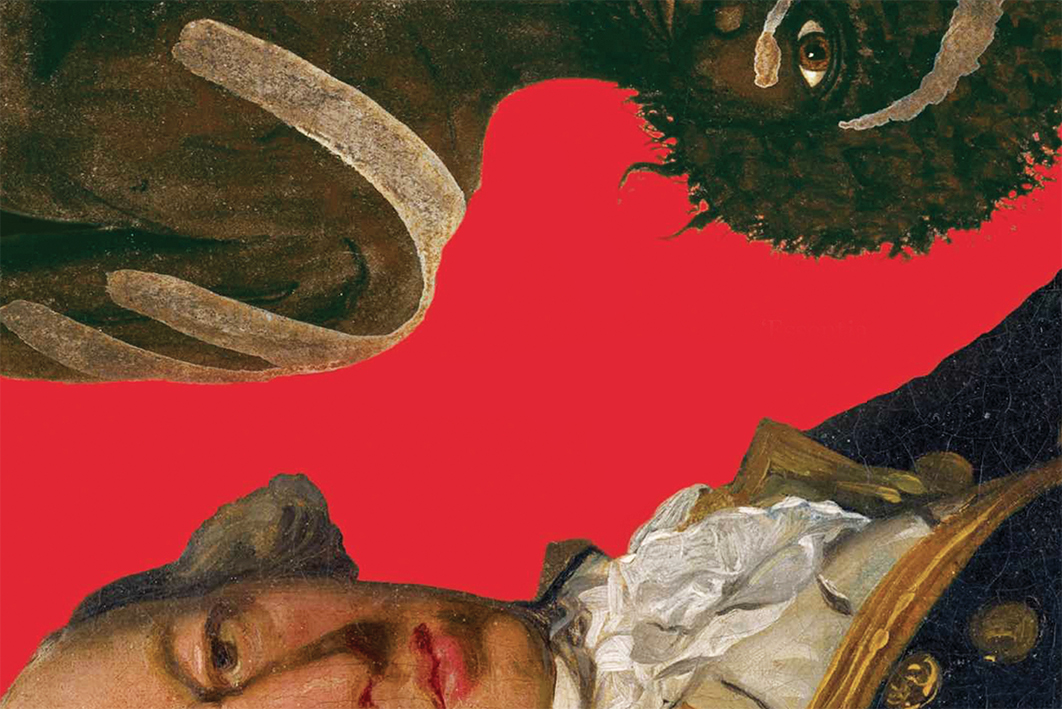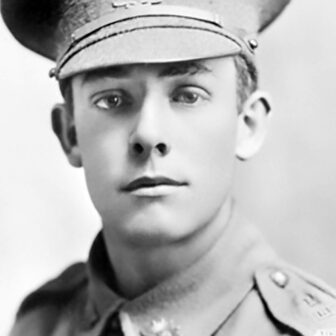The first thing that strikes you about Kate Fullagar’s Bennelong and Phillip is the unusual way she has organised her material. There is a good deal of serious purpose in the structure she has chosen to impose on old stories, and it is this structure that I will try to spell out here. It matters very much, because in arranging things as she does she wrestles with two problems of central importance for Australian history.
Number one: she takes infinite trouble in giving equal time to her two subjects, the Wangal man Bennelong and Arthur Phillip, first governor of New South Wales. These two came to know each other as a result of the British invasion and yet they led largely separate lives. Throughout the book, in a spirit of strict equity, Fullagar moves backwards and forwards from one to the other in a process of interweaving. For the reader moving through the book it is like handling particoloured rope.
And then, secondly, she tells their story, or rather their two stories, backwards.
Fullagar’s project for equality reminds me of the famous passage in Eleanor Dark’s The Timeless Land (1941) where the fictional elder Tirrawuul advances to meet Phillip during the first hours of invasion. Each man watches the other, eye to eye. “Tirrawuul saw a smallish man, quite incredibly ugly, with a pale face and a very large nose [and so on]… Phillip saw an elderly savage, quite incredibly ugly, with greying tangled hair, and alert dark eyes [and so on].” That is literary equity par excellence. What Dark achieved through the liveliness of historical fiction Fullagar manages in a more assiduous, methodical way. Reading Dark and Fullagar together shows up better the purpose of each.
Dealing one after the other with invader and invaded, Eleanor Dark gives a keen impression of mutual strangeness and of how each man searched the other’s face for a shared humanity. Kate Fullagar’s method is more roundabout — not so much literary as ethnographic. She gives descriptions, side by side, of how each man and his people enacted the rituals of death and burial, and their different uses of violence, including ceremonial violence, and of dance, dress and display.
Questions of culture and personality necessarily intersect. Neither Bennelong nor Phillip was perfectly typical of his kind, whatever that might mean. Bennelong seems to have had a strong emotional dependence on women, for instance. Phillip, on the other hand, seems to have needed female company markedly less than most other Englishmen of his day. One of the best things about Fullagar’s book is how she uses the grid of culture as a powerful background for personality. The tension between culture and individual character vividly complicates the tension between the two men, played out as it is in the highly dramatic circumstances of invasion.
There is another complication, less obvious but more profound. In her book Upheavals of Thought: The Intelligence of Emotions, the American philosopher Martha Nussbaum sketches the varied ways in which culture shapes feeling, while acknowledging it is often hard to distinguish the thing from its expression. Grief among the Balinese, says Nussbaum, looks and sounds very different from grief among the Ifaluk, a people of the Caroline Islands. The Utku people of northwest Canada condemn anger as childish but the ancient Romans saw it as manly and noble; the Utku keep a lid on it but the Romans made all the noise they could.
The anecdotes in Fullagar’s book show differences of the same kind, in feeling and expressions of feeling, between First Nations peoples and the invading British. Fullagar makes good use of this material, though she probably doesn’t push the question as far as Nussbaum might have liked. She quotes David Collins, Phillip’s secretary and judge-advocate, describing the mysterious combination of feeling and violence among Indigenous people. Men known to be good friends fought each other, so Collins said, “with all the ardour of the bitterest enemies,” apparently intent on wounding if not murder, and yet they were friends again afterwards. The officers were also baffled by Bennelong’s violence towards the young woman Kurubarabula, his promise to kill her, her running towards him all the same, and then their marriage.
The feelings of the invaders themselves must have been just as impenetrable to First Nations people, as they often are to us today.
Throughout the book Fullagar shows an ongoing interest in the possibility of a treaty engineered by Phillip, as governor, with Bennelong, as a representative of the invaded peoples. Phillip was anxious, for instance, that Bennelong and Yemmerrawanne should meet George III during their stay in England, 1793–94, because, Fullagar says, such a meeting might have led to a “formal agreement” between the British government and the Indigenous population. Something might have been done, in other words, to register Indigenous “consent” to the settlement at Port Jackson.
There was certainly talk now and again of the need for “consent,” but there is no surviving evidence that the British government ever thought of making an agreement of this kind. Unlike other Indigenous communities affected by colonisation, the people at Port Jackson were understood to be wanderers, “not attached to any particular spot.” After five years on the ground, Phillip knew this was not true. Individuals and groups were obviously attached to certain places, though exact ideas about possession were so far hard to decipher.
And yet, as far as we know, even Phillip never argued for any kind of agreement about land use. It would have been a feather in his cap if the king had deigned to notice Bennelong, however briefly, with an “audience,” but it seems likely that that was the limit of the governor’s hopes.
All the same, by circling as she does around the idea of a treaty, Fullagar hints at a larger and deeper question — the possibility of ongoing mutual respect, including the invaders’ capacity to listen, in an official sense, to Indigenous voices. Presentation to the king was called an “audience” because it involved listening by the executive. In this case, for whatever reason, the king chose not to listen. While in England, Bennelong and Yemmerrawanne were dressed as English gentlemen and entertained with all sorts of display, military, theatrical and cultural, but they were not invited to perform themselves as a representative Voice. The more things change, the more they stay the same.
So we come to the second distinctive feature of this book’s structure. Its story or stories are told backwards. In describing the lives of Bennelong and Phillip, Kate Fullagar begins with the end and ends with the beginning. In the first couple of chapters we hear about how each man has been understood since his death — the ups and downs of each “afterlife.” Combined with that and just as important is detail about the network of friends and kin each left behind him when he died. So we are introduced to each life as a creation of human circumstance, and to each individual as a focal point of feeling and attention. After all, other people make us what we are. It is a subtly powerful point, and it tends to pervade the book.
Ending with the beginning can have the same sort of effect. So, in the last chapters we read of Bennelong and Phillip, each in his own way, born into a family network and into a store of traditional knowledge — a rich cultural inheritance. Here is another point of creative tension. Quite apart from the inevitable push and pull that goes on between the two men during their period of contact, we sense a striking ambivalence in the way each of them stands out from their crowd of friends and associates while at the same time being continuously drawn back in. Such is life, now as then.
Fullagar offers an interesting explanation as to why she has chosen this back-to-front approach. Partly, it is another part of her project of equity between Bennelong and Phillip. Telling stories in the normal sequential way means giving preferential treatment to Phillip. Phillip represented an empire on the move. British energies and British achievements gave men like him a right to possess the future. He is a founder of nationhood, a cultural hero, and as such inevitably mythical in some sense. That makes Bennelong his antithesis, a figure attractive enough but doomed to fail. Phillip represents high-principled government, good order and the inevitable progress of Western civilisation. Bennelong stands in his shadow, childlike, irresponsible and ultimately tragic.
Fullagar is not entirely free herself from this framework of thought. In the European context she pits “conservatives” of the 1790s, including Phillip himself, against “the liberal spirit of French popular democracy,” and yet such terminology is surely imposed by us in retrospect. In those days, “conservative” implied a power to nurture and sustain life. The sun, for instance, was called “a conservative,” and by the same token words like “liberal” and “democracy” seem to jar with the actual methods of the Jacobin revolutionaries in France.
Altogether, British ideas about the relationship between past and future were still fairly fluid in the late eighteenth century. The mindset of the first invaders is a topic of enormous complexity and weight, and in tackling notions of time, “progress” and so on, it might be better to avoid such words altogether.
But then, Fullagar is right. Our own assumptions about “progress,” as she says, make the violence of empire “the unfortunate means to a justifiable end.” Telling the story in the old-fashioned way would also give a shallow idea of individual character, including moral character. An iconic and ideal Phillip, assimilated to the statue in Sydney’s botanic gardens, cannot be genuinely human. The same straitjacket gives a kind of narrative uselessness to Bennelong’s life during his post-Phillip years. No longer a valued go-between, he seems to be trampled underfoot by “galloping global empire.”
Freeing herself from this old paradigm, Fullagar also frees Bennelong and Phillip. The various life phases of each take on a new significance. More than that, invasion, occupation and settlement can be more clearly understood because nothing is preordained.
In 1788 nobody could have known whether there would be a second fleet or whether the settlement would survive at all. By 1800, if those questions were answered, no one could have known whether the occupiers would ever be more than a circumscribed small-farming community. When Bennelong died in 1813, settlers were beginning to take up large grants, suitable for sheep and cattle, and in the same year country west of the Blue Mountains was opened up for settlement. Even so, no one so far could have predicted occupation from shore to shore.
This was indeed a galloping empire, a brutal impulse of power that in the end passed Bennelong by. Whether his latter years were miserable or not, the balance of power that had seemingly existed between himself and Phillip had been radically undone.
The book is subtitled “A History Unravelled,” and in a couple of places Fullagar talks about lives “unspooled.” It is an interesting image. Cut loose from its conventional framework of long-term achievement and/or loss, the old Bennelong–Phillip tapestry comes apart, falling into a multitude of brightly coloured episodes and life phases. Each man is caught more completely in his own time — but caught, as it were, with no memory of earlier events, because with Fullagar’s chosen structure he has not got to those yet.
In short, her biographical method is not problem-free, but it serves a vital purpose. It will appeal to some readers more than others, but no one can avoid having their ideas about invasion challenged to some extent by this remarkable book. •
Bennelong & Phillip: A History Unravelled
By Kate Fullagar | Scribner | $55 | 320 pages




